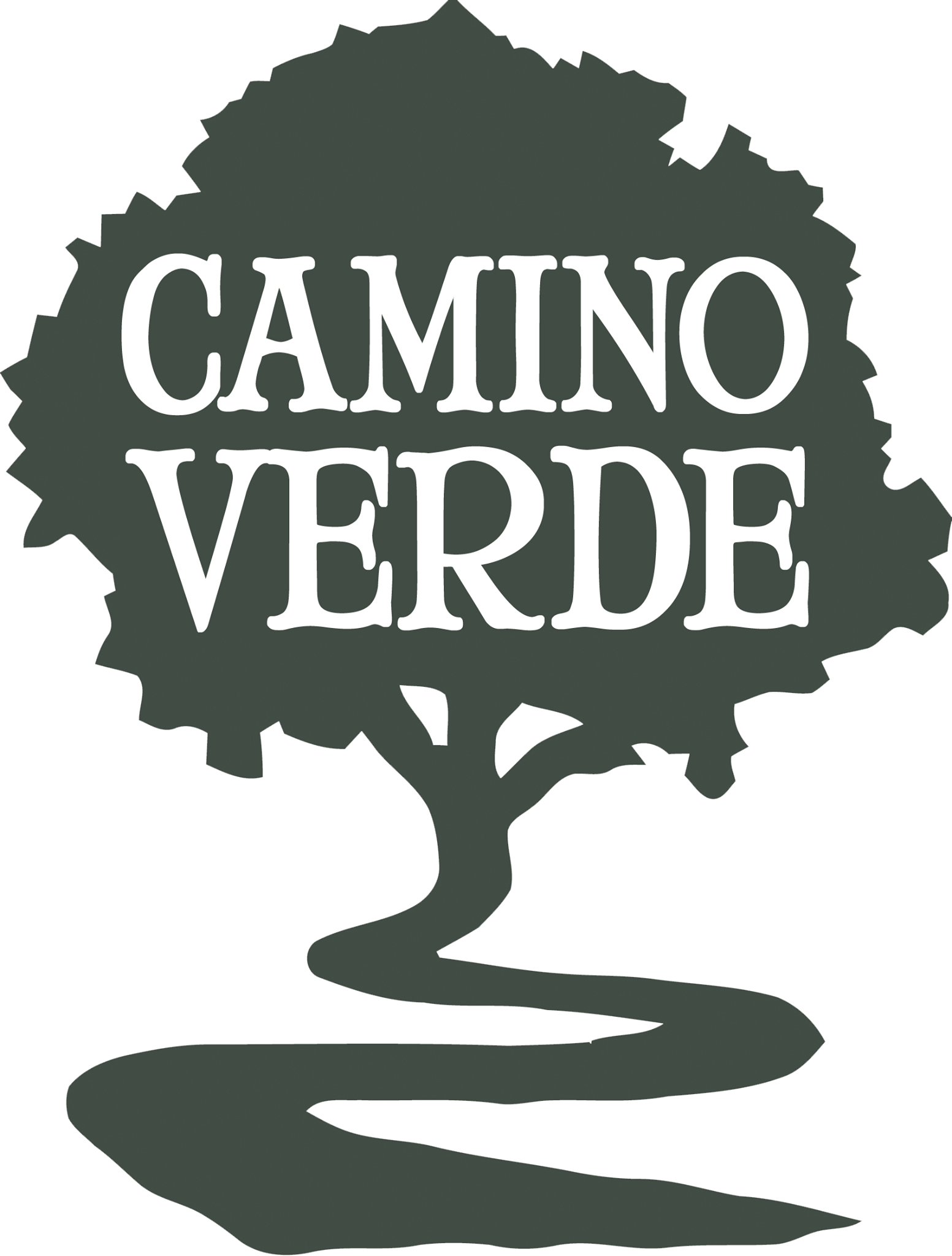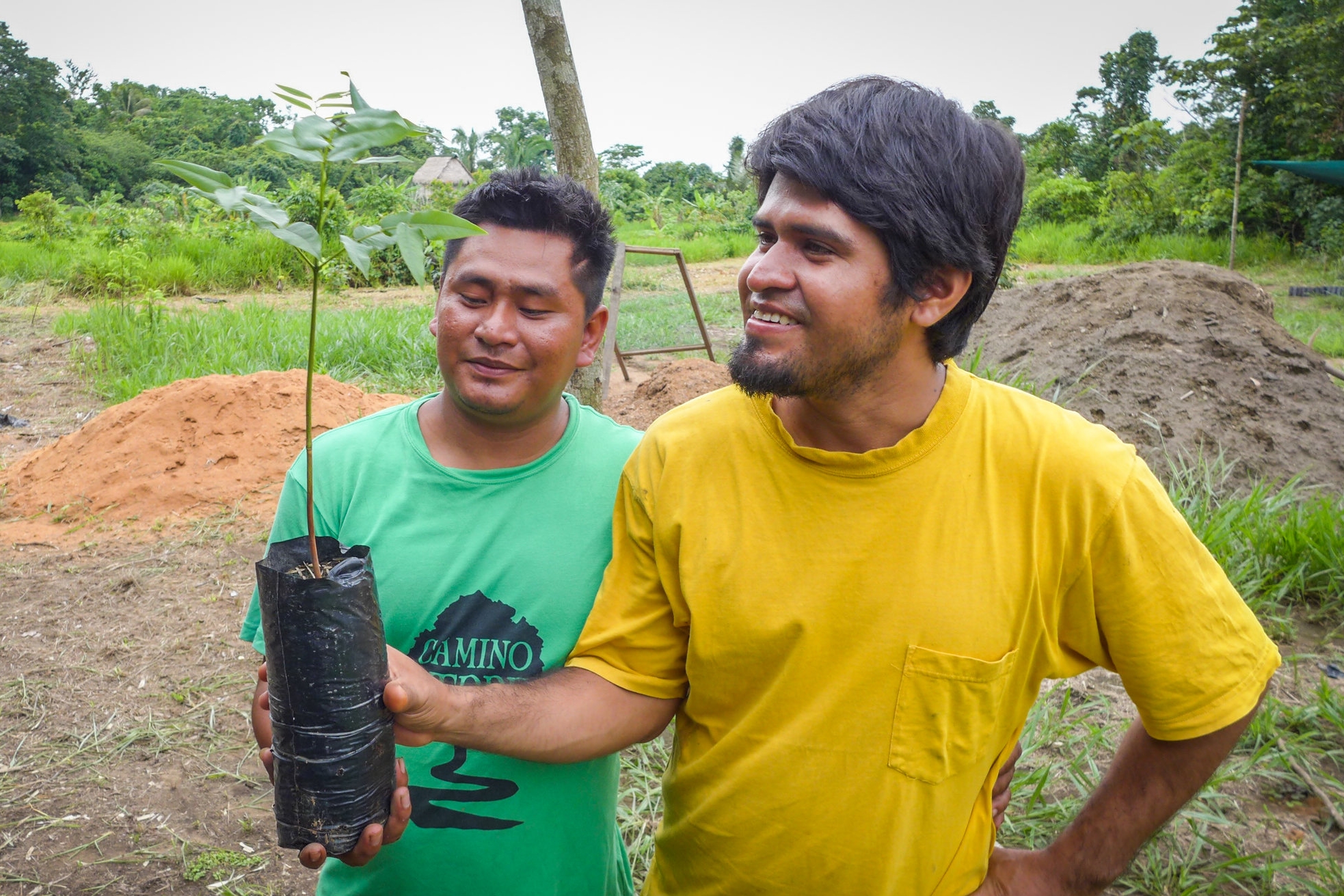Introducing Camino Verde La Joya Forestry Nursery
Camino Verde La Joya Forestry Nursery is run by Manuel Huinga (right) and a small staff
We all know the Amazon rainforest is being destroyed. Right? – I mean, we do know that. But why is it being destroyed? How is this happening – right before the world’s eyes? When we knew we should do something to protect this unique biological treasure. When we knew that our indifference and inertia would only yield, could only yield, the same old result. This is what happens when forests meet what we call abstractly, natural resource exploitation.
Are we really aware of what’s being lost? What does it mean to you or me if the Amazon is compromised? Most of our medicines come from rainforest plants. That timber in your desk, those railroad ties in China bringing consumer goods to you, are from Amazonian trees. Selective logging for fine quality wood retains a forest, but what happens to an ecosystem when many of its key species, its oldest giants, go missing? What happens when the reckless harvest of medicines sold as cash crops internationally threatens the wild populations of trees that are rarely, if ever, planted by people? Worse still, how do we reseed after slash and burn clear cuts, the norm in many forms of agriculture in the Amazon?
The nursery produces remarkable quantities of seedlings and diversity of species.
Grappling with these questions, Camino Verde is proud to unveil our new native species tree nursery in the Peruvian Amazon. The La Joya Forestry Nursery, located just 4 kilometers from the regional capital Puerto Maldonado, represents our commitment to the research and implementation of native species biodiversity conservation in its most active, tangible form: planting trees. The goals are ambitious – to propagate 10,000 individual seedlings representing over 100 native species in its first year.
Our team of Amazonian seed specialists is led by Manuel Huinga, a BS in Forestry and Environmental Science from Puerto Maldonado’s UNAMAD University. Manuel started his work with tree seeds over 6 years ago at a biodiversity nursery run by the Botanical Research Institute of Texas near Puerto Maldonado.
Starting on with Camino Verde 3 years ago, Manuel was part of the team that created our Reforestation Center’s first tree nursery, home to over 350 species so far, and he’s brought that experience to bear on the creation of the La Joya nursery. For him, nursery work is nothing less than a tangible way to contribute to the Amazon’s longevity. With so much that seems daunting or impossible to change, Manuel is excited to be part of a solution. “If you come to the nursery, you won’t find just words. You’ll find real achievements. You’ll find trees growing, seeds sprouting. You’ll find trees being planted. You’ll get to experience what it means to plant a tree, what it means to take care of nature.”
The main nursery area as seen from the water tower.
Our work at La Joya has been supported by several important allies. First, Lush Cosmetics North America provided a generous grant to get the initial nursery infrastructure off the ground. Second, we partnered with CINCIA – Wake Forest University's Center for Amazonian Scientific Innovation – to produce thousands of seedlings in our first year, seedlings that will be planted in degraded gold mining areas, Madre de Dios region's single most significant source of environmental devastation and forest loss.
CINCIA researchers measure seedlings at La Joya.
Anyone visiting the Amazon, even briefly, cannot avoid witnessing the impact of exploitation of natural resources. The effects are obvious, are charred landscapes, are trees that when felled are as big as crashed airplanes. As visitor and then resident in the Amazon, I saw landowners forced to make tough decisions in pursuit of a better life for their kids. I saw how greed is not as prevalent a motivator as the simple desire to maintain a dignified standard of quality of life.
The problem is complicated, but some solutions are remarkably simple. For Manuel and for Camino Verde, being a part of the solution is as direct as putting a seed in the ground and ensuring it grows. Thank you for joining your green thumbs to ours. This year we will plant thousands of trees together.




